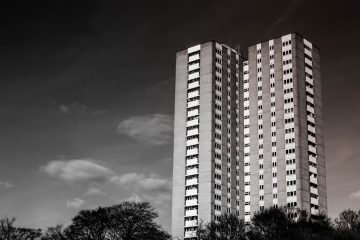Buildings built before asbestos was banned in August 1999 are very likely to contain the substance, which can be hugely detrimental to health if disturbed and inhaled.
Asbestos management is vital to a well-functioning and legally compliant building maintenance plan. For property managers, asbestos surveys should form part of their regular maintenance, as well as being top of the list if any major works are likely to take place.
Here we’ll be making things clear by discussing the different types of Asbestos surveys available, when they should be utilised and why.
What is Asbestos?
Commonly used in building construction up until August 1999, asbestos is a natural, fibrous material. It was widely used due to its heat-resistant and durable qualities.
It was most commonly use in the manufacture of:
- Floor tiles (PVC and vinyl)
- Cement products used for roof tiles, gutters, and soffit boards
- Thermal insulation and fire protection
- Mastic and bitumen adhesive
- Soil and flue pipes
Incredibly, there are records of the health risks of asbestos being recorded as far back as in Roman times, then again in the Victorian era. Unfortunately these warnings went unheeded, and use of the material was very common throughout the 50s, 60s and 70s.
When is it Dangerous and What Can it Cause?
Asbestos isn’t dangerous unless it deteriorates or is disturbed in some way. It’s then that the fibres become airborne and, if breathed in, can cause a myriad of health problems.
Inhaling high concentrations over an extended period of time can be catastrophic. All forms of asbestos are considered carcinogens and exposure is commonly linked to lung, larynx and ovary cancers as well as mesothelioma (a cancer that forms on the protective tissue covering the lungs or abdomen).
Asbestosis is also a common ailment for those who have been exposed to large amounts of asbestos for a long period of time. This causes breathing difficulties and can lead to an enlarged heart, developing slowly over a number of decades.
For those exposed to a smaller amount over a long period, general or localised thickening of the lung lining can occur. Skin issues can also be caused when fibres become embedded, causing warts and corns to form.
In terms of deaths, the numbers are unfortunately still very high. The Health and Safety Executive (HSE) have estimated that UK asbestos deaths are still in excess of 5000 every year. Mesothelioma accounts for a large majority of these deaths with an estimated total of 2268 in 2021.
Legal Obligations for Building Managers
So it’s clear why asbestos is an issue, and why it was banned from use in 1999. Now, what should property managers be doing to manage the risk of pre-existing asbestos in their buildings?
Regulation 4 of the Control of Asbestos Regulations 2012 states that those responsible for the common areas of residential buildings (built before the year 2000) are legally required to carry out asbestos surveys and to manage the material appropriately.
There are various types of survey, including:
- Asbestos Management
- Re-Inspections
- Refurbishment and Demolition
Asbestos Management Surveys
An asbestos management survey is carried out to locate( as far as is reasonably practicable) the presence and extent of any suspected Asbestos Containing Materials that could be damaged or disturbed during normal occupancy.
These surveys will probably involve minor intrusive work as samples may need to be taken for confirmation. If the surveyor can’t gain access to certain areas, they will be marked as “no access” on the report and presumed to contain asbestos until access can be achieved at a later date. Property Managers should arrange for an appropriate professional to attend the survey and allow access to lift shafts and electricity cupboards.
Re-Inspection Surveys
Once your management survey has been completed, you will receive a report. It will let you know if asbestos is present and in a manageable condition- if so, an annual reinspection survey is required.
Reinspection surveys will update the register of any changes to the Asbestos Containing Materials. If the management survey finds asbestos in poor condition or in a position that’s likely to be disturbed, recommendations will be made to have it removed.
Refurbishment and Demolition Surveys
If you have plans for extensive works to the building, or any works in the areas you know contain asbestos, then a refurbishment and demolition survey is required. This is a fully intrusive survey involving destructive inspection where necessary as access must be gained to all areas.
Under the 2012 regulations, all Asbestos Containing Materials must be removed (as far as is reasonably practicable) before major refurbishment or demolition takes place. This may also be the case for smaller refurbishment works if you’re planning any structural or layout changes.
Where asbestos is unlikely to be disturbed and is in good, manageable condition, it may well be safer to leave it in place and to ensure regular inspections instead.
Contractor Compliance
As the duty holder of the site, it’s the building manager’s responsibility to ensure that the surveyors have access to the site’s previous asbestos surveys and the register. The register must be viewed and acknowledged by all contractors before working on site, so it’s advisable to keep a paper trail of exchanges and to ensure they have responded to confirm before proceeding.
If you would like further advice and guidance on managing the asbestos in your building, please get in touch and we’d be more than happy to discuss further.


